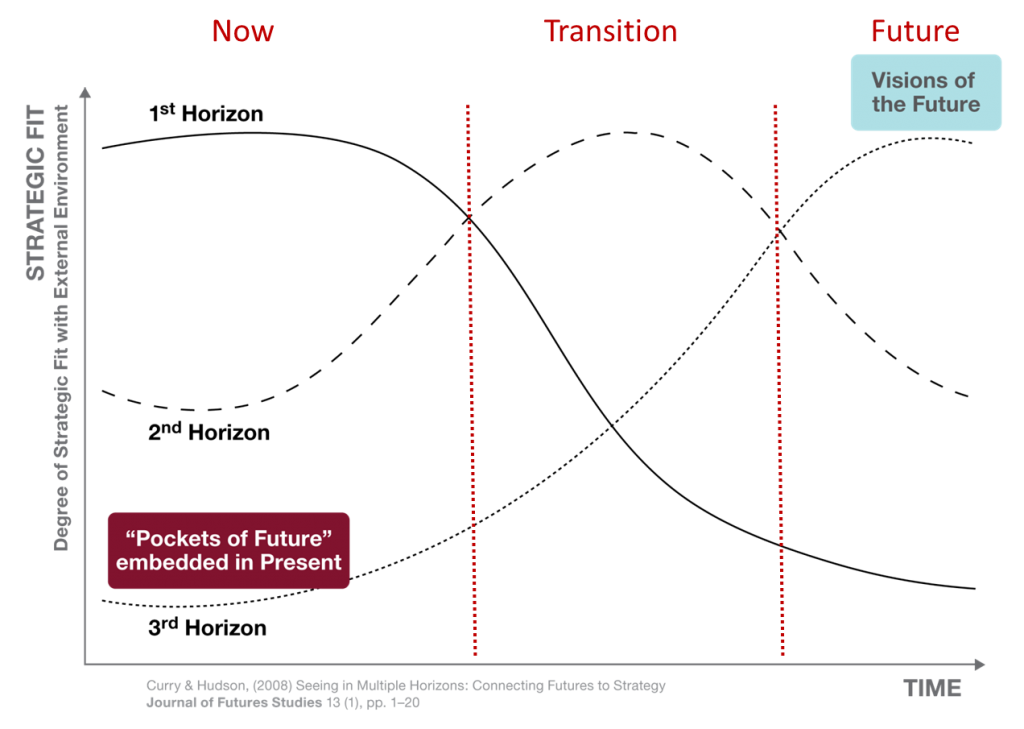 What’s an appropriate timeframe for foresight work? It’s a question we futurists often get. It’s usually coming from a concern that a particular project’s timeframe may be too close to the present, or put differently, not sufficiently far enough into the future.
What’s an appropriate timeframe for foresight work? It’s a question we futurists often get. It’s usually coming from a concern that a particular project’s timeframe may be too close to the present, or put differently, not sufficiently far enough into the future.
It’s become a lot easier to answer this since the field has been using the updated Three Horizons framework that I first came across in a piece by Andrew Curry and Tony Hodgson, ”Seeing in Multiple Horizons,” which later won an APF MSFW award.
The first horizon covers the existing way of doing things. My view is that futurists ought to be careful about playing in this space. My favorite story here is on “pizza trends.” I was a new internal futurist and asked to gather trend data on pizza consumption. I reasoned that if I answered this request, I’d become the data gathering guy for the exiting business, and I felt it would pigeonhole the foresight activity into the wrong timeframe. So I took the risk of saying “not my job.”
Rather, I reasoned then and advise now, the job of the futurist is to focus on Horizons 2 and 3, the zones of transition and new visions of the future. The vast majority of my work has been in Horizon 2, which probably reflects my focus on the corporate world earlier in my career. Here we focus on the potential disruptions to the existing system that ultimately may portend a new system, but provide the client with insight into what’s next, which is usually their key concern. Of course, I/we try to extend that view into Horizon 3 as practical.
In terms of how many years into the future, it depends on the topic or system. Some topics that are moving very vast or just on the cusp of a transition from H1 to H2, may appropriately suggest a very close-in timeframe, say 3-5 years. Other topics, which are very slow moving, may have a very long H1, where 3-5 years is still firmly in H1 and thus not appropriate.
In thinking back across my project work – mostly H2 work — I would say that H2 is most often 5-10 years (again, keeping in mind the differences according to topic). Clients usually want five, and I’ll do my best to persuade them to extend that to at least 10. But we do some H3 work. We did a project for NASA extending to Horizon 3 with a 2050 timeframe.
So the rule is to first work out the timing of the Three Horizons, and as long as you’re in Horizon Two, that seems like a good starting point for foresight work.
Thanks to Micheal Cooke fo inspiring this piece with a recent comment in Linked in. — Andy Hines
Would you do video interview with us?
Hi, can you clarify who you are and what it’s for?